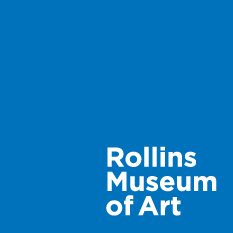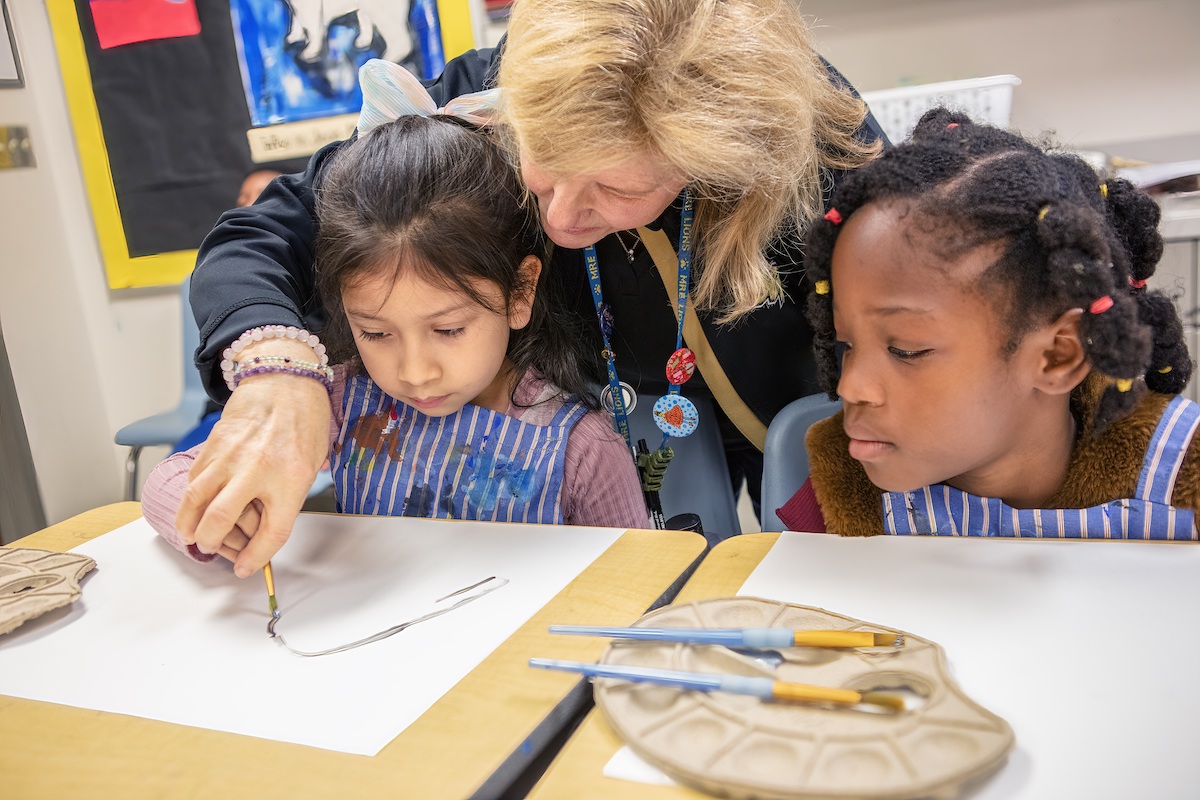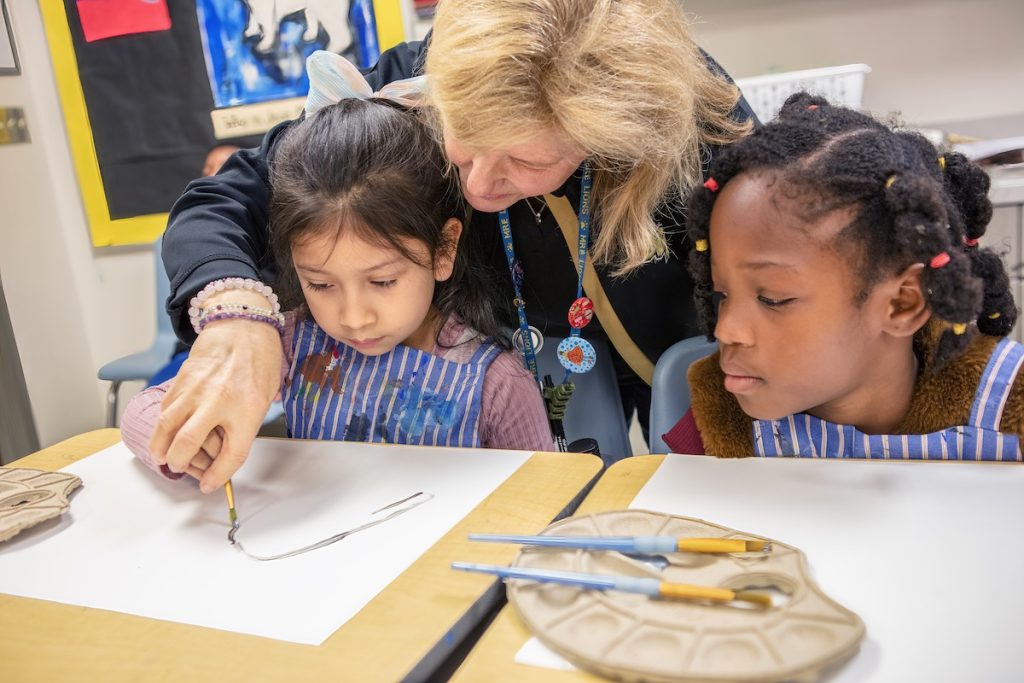
Reflections from the Bradley-Otis K-12 Educator Fellow
It has been about a year since I first attended a professional development for art educators at the Rollins Museum of Art (RMA). While touring the Museum’s then current exhibition, American Visions: Recent Additions to the Collection, which featured 38 paintings contributing to the Museum’s ongoing collection of American art I was drawn to Re:Visions an interactive gallery that accompanied the exhibition with participatory works of art on postcards. In this space, museum visitors selected a postcard that included an image of an artwork from the exhibition with an associated writing or drawing prompt on the back. The prompts and images were thought-provoking, timely and lent themselves to encouraging introspection and powerful responses from visitors to American Visions.
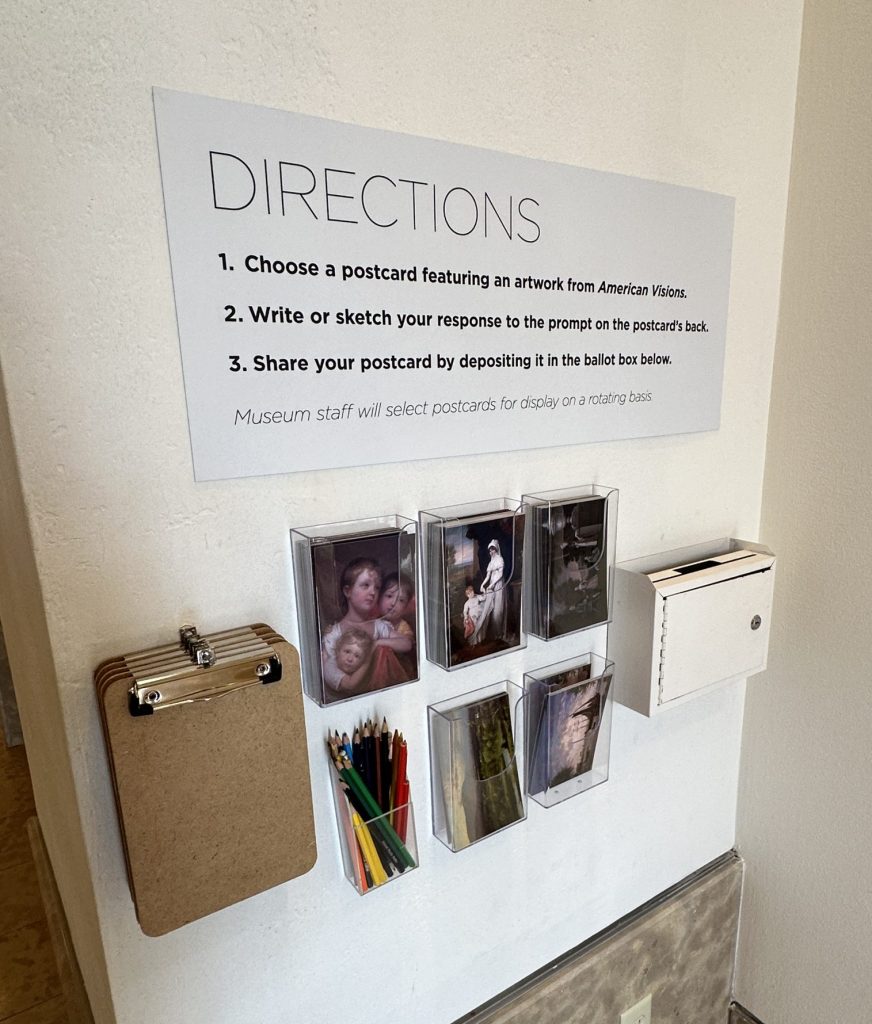
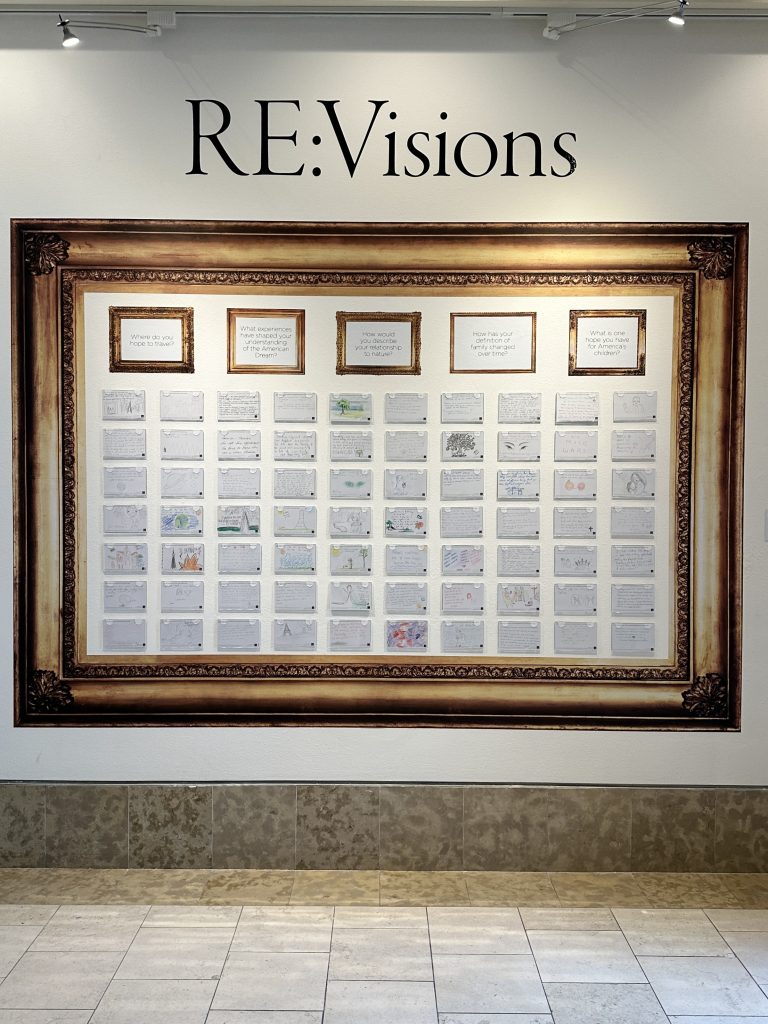
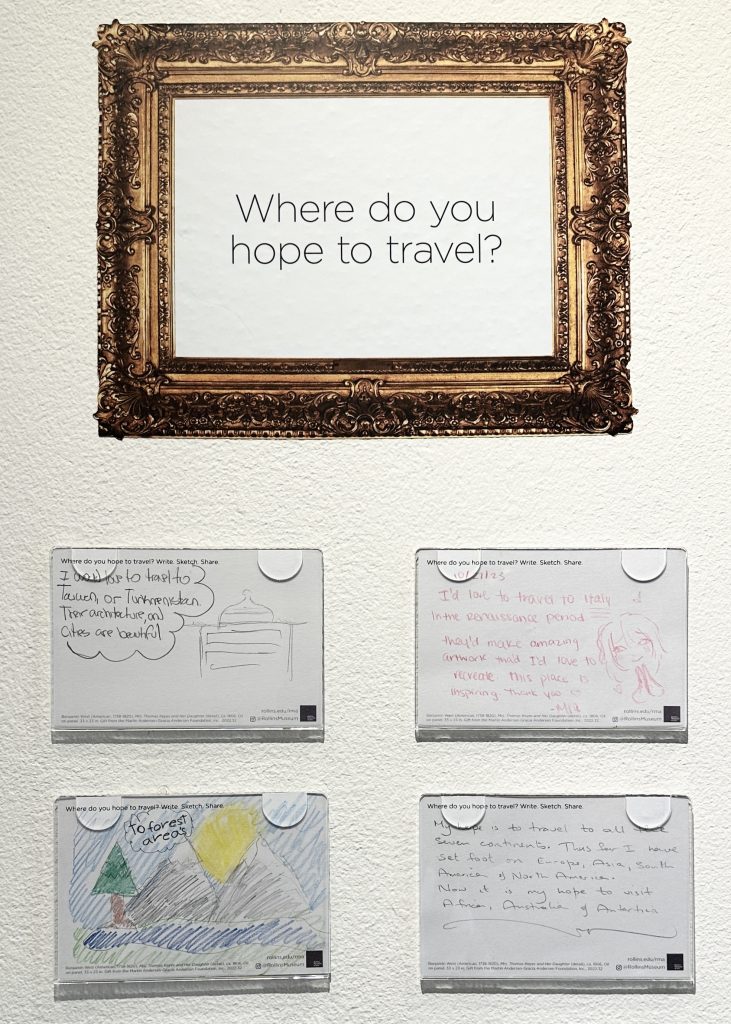
When I first viewed this installation, I did not foresee that RMA would become a part of my professional life. I would soon adapt this postcard activity in my art classroom, this shared experience would lead me to become the Bradley-Otis K-12 Educator Fellow. In this role, I have been invited to research the RMA collection to inform the development of ten standards-based, social emotional learning (SEL)-focused lesson plans that will be published as an open-access resource on the Museum’s website. This work will add depth and breadth to RMA’s significant teaching and learning resources for art educators.
In this post, I explore my journey to and plans for this position, recognizing the critical role art plays in shaping students’ well-being and how museums serve as impactful partners for classroom teachers.
The Importance of Art in Education
There are days that many of our children wake up to insurmountable challenges and immense pressure, yet students are great thinkers with imaginations, hopes, and well-founded visions for their path ahead in this world. Art teachers have the unique opportunity to provide a safe and peaceful place for children who need to create and dream! We are at a time in our history where stress and anxiety are high for families and teachers. Youth Mental Health First Aid training is provided to teachers nationwide to inform educators and support them in recognizing signs and symptoms of mental health concerns and substance abuse problems affecting our students.
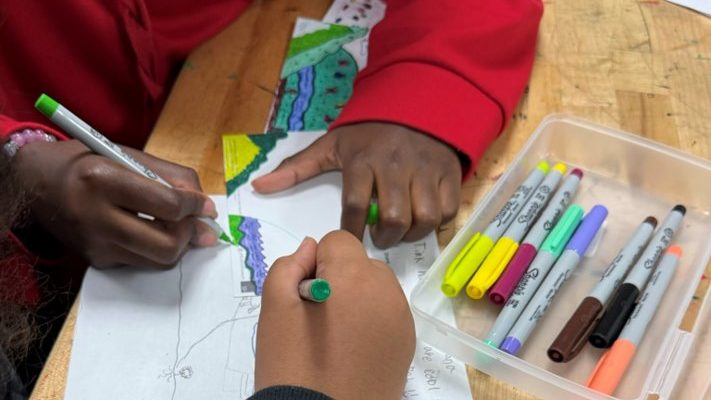
I have always believed in the importance of art and its power to move and engage children. Many of my elementary (K-5) art students live in a prevalent poverty neighborhood and are faced with unthinkable challenges. The children have limited access to art materials and do not create art outside the walls of our school as often as they would like. Some of the children experience challenges and trauma in many forms. Despite these obstacles, my students come to school to learn, try their best to be awesome, and repeat every day.
As an art educator, I continuously seek to adapt lessons to my students’ needs while teaching specific standards-based skills utilizing art exemplars to inspire and engage. The art- making process allows my students to respond positively to their experiences in a healthy way. The lessons I plan are based on research in trauma, education, and social emotional learning. The art room is a safe space, a peaceful place for students to build things, to make things, to create and dream.
My research and teaching are guided by these questions: How do art educators today implement such a curriculum? Where should we look to find skills-based lessons and art examples that open the door for creativity and opportunities for children to engage in meaningful ways and to express their thoughts and feelings about their own lives?
Applying Re:Visions to the Classroom
Soon after that original encounter, I asked David Matteson, Associate Curator of Education at RMA, about Re:Visions and whether the Museum could provide my students with the postcards so that they could have an opportunity to respond to the selected American Visions works. The next week I received enough cards for all my students! We soon began the process of learning about each of the paintings in the collection. My students were guided to “Write. Sketch. Share.” about the paintings as they responded to the prompts.
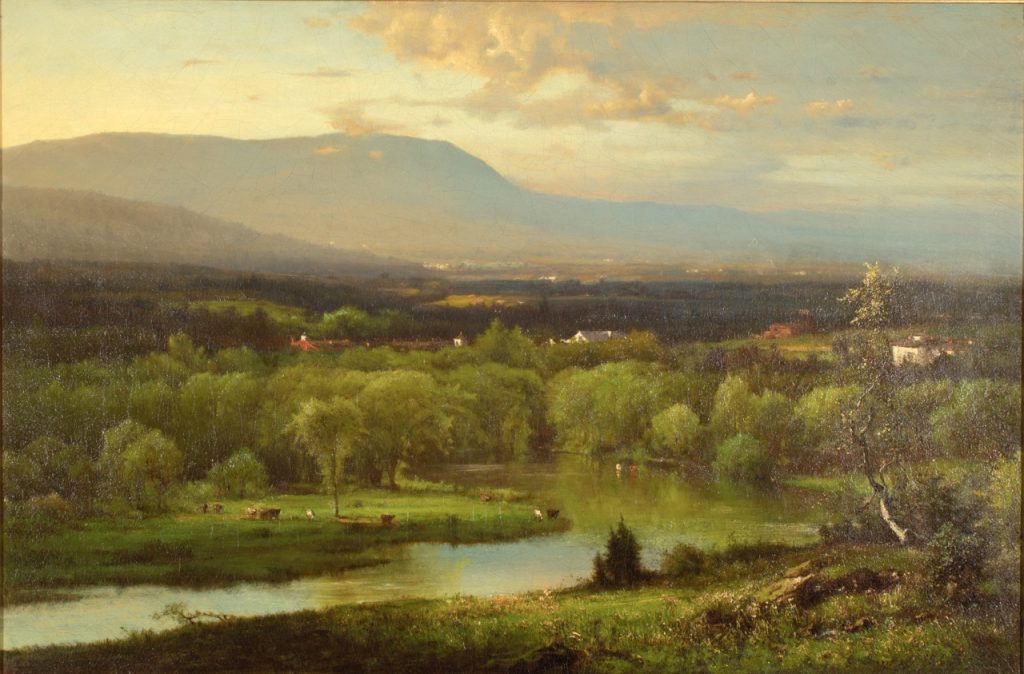
I was overwhelmed by their responses to the art and to the prompts. They treasured the cards, were completely captured by the subjects of the paintings, and connected to them on a very personal level. The beauty of the George Innes landscape deeply moved them.
Below are a few examples of the prompts and the children’s responses.
Prompt: Describe your relationship to nature


Prompt: What hope do you have for America’s children?
The children’s hopes for America’s children were optimistic and deeply grounded in their self-awareness, they responded, for all children to “go to school,” to have homes, and to eliminate bullying.

“I hope everybody doesn’t get bullied.” -student, grade 3
Prompt: What experiences have shaped your understanding of the American Dream?
When asked about what experiences have shaped their understanding of the American Dream, the children shared their individual experiences of their families coming from Haiti or Mexico to America, informed by the belief that “every citizen [has] the opportunity to achieve success and property from hard work.”
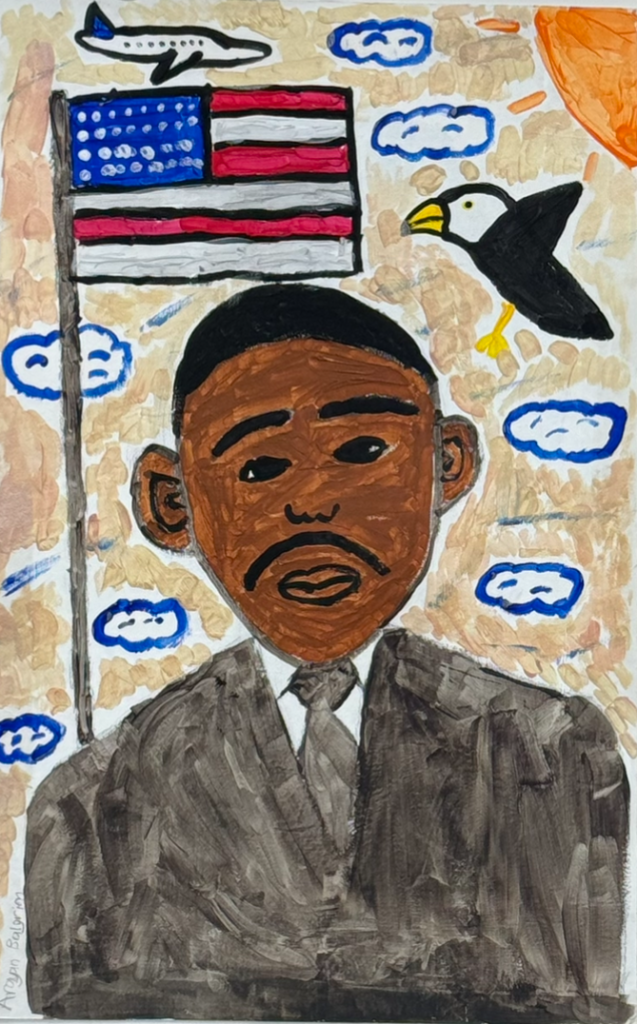
“My mom came From Haiti, she found a job and she takes care of her family.” -student, grade 3
“My mom was born in Jamaica and she had to work two jobs, now she can afford things.” -student, grade 3

Sharing with Fellow Educators
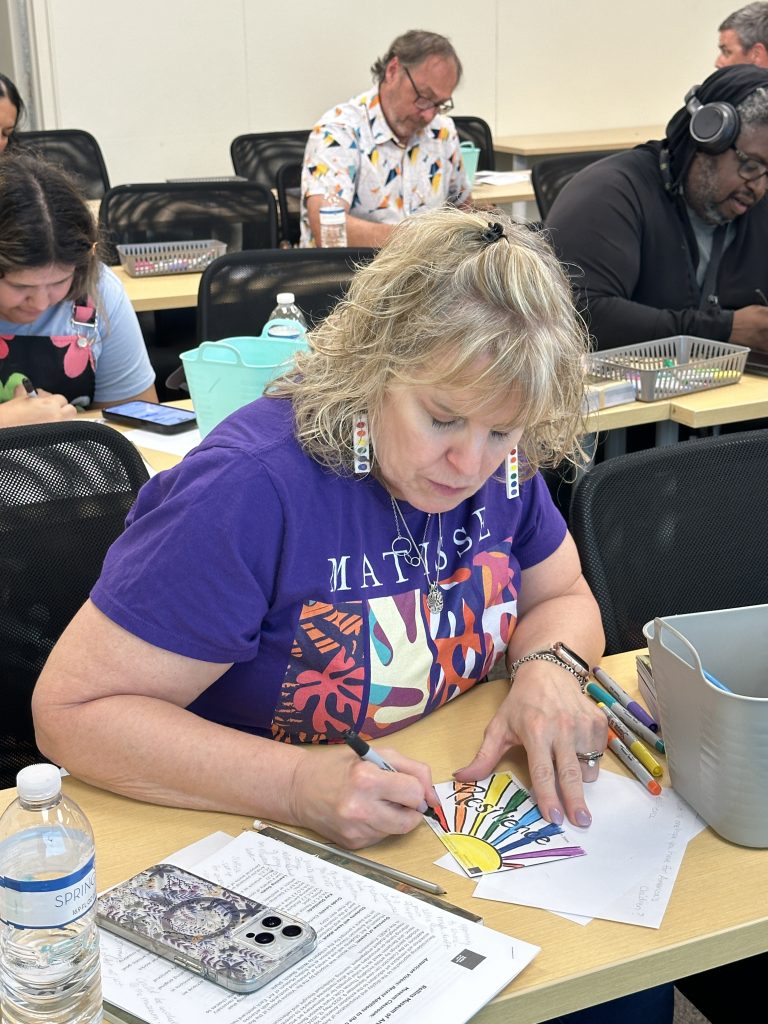
After successfully adapting this postcard lesson in my classroom, I led a workshop on this effort for fellow art teachers as part of RMA’s Teacher Institute, a week-long, summer professional development program that introduces early career art educators to principles of object-based learning. In March 2025, David and I will share additional insights about this project at the National Art Education Association conference.
Richard Baker Book Project: Our First Lesson in the Bradley-Otis Fellowship
The opportunity to bring the Rollins Museum of Art’s stellar collection to the classroom has provided a fresh way to explore complex topics in a non-threatening way with the students. As well as integrating the art museum’s works into the teaching of art, educators can offer students an opportunity to connect to a broad, and significantly varied experience that blends artist’s deep thinking and rich canvases with critical thinking skills, reading, writing, cultural awareness, and social emotional learning.

Richard Baker (American, b. 1959)
Major American Poets, 2013,
Gouache on paper, 14 1/4 in. x 11 1/4 in. The Alfond Collection of Contemporary Art, Rollins Museum of Art. Gift of Barbara ’68 and Theodore ’68 Alfond, 2013.34.20. Image courtesy of the artist and Clark Gallery, Lincoln, MA.
The first lesson under the RMA Bradley-Otis Fellowship, Richard Baker Book Project: Painting Our Own Beloved Books with Gouache on Paper to Explore Self-Awareness will introduce art educators to the process of creating a book cover inspired by Richard Baker’s paintings. Students will learn about the artist Richard Baker and Baker’s paintings in the RMA Collection. Baker was commissioned to create a series of twenty paintings, each depicting the cover of a book selected by a Rollins faculty member as impacting their emotional or intellectual development. Baker has fastidiously captured the details of the faculty members’ actual physical copies of their selected books—faithfully rendering the signs of wear and study.
I am thrilled to be able to share opportunities to integrate RMA collection works into the classroom. These novel approaches for social emotional learning in art education benefit teachers who advocate for our children through creativity in art education. I will be sharing some of my insights into this new way of looking at the RMA collection in my next post expected in the spring. Visit our Collection page to learn more about works by Richard Baker.

Anne Cochran Grey, Ph.D. is an art educator and researcher who teaches and integrates her skills into the K-12 and university settings. She has worked with some of the most notable artists, arts educators and creativity researchers in the field. Anne Cochran Grey holds a Ph.D. in Education with a major in Art Education and a specialty in Art Appreciation and Criticism. She is a recipient of the National Art Education Association’s 2012 Elliot Eisner Doctoral Research Award in Art Education Runner-Up of the Year Award for her dissertation. In addition to teaching art in the elementary school classroom Dr. Grey is the 2024 Bradley-Otis K-12 Educator Fellow at Rollins Museum of Art.
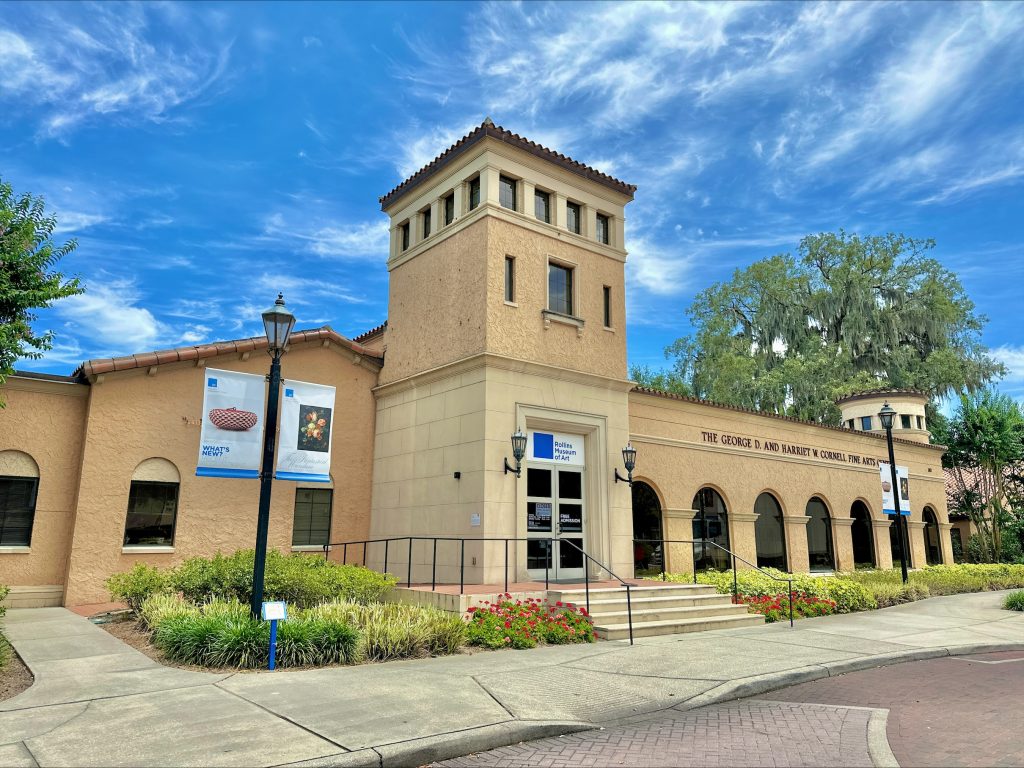
The Rollins Museum of Art features rotating exhibitions, ongoing programs, and an extensive permanent collection of over 6,000 objects that spans centuries, from examples of ancient art and artifacts to contemporary art. Open to the public year-round, its holdings include the only European Old Master paintings in the Orlando area, a sizeable American art collection, and a forward-thinking contemporary collection on view both at the Museum and The Alfond Inn.
